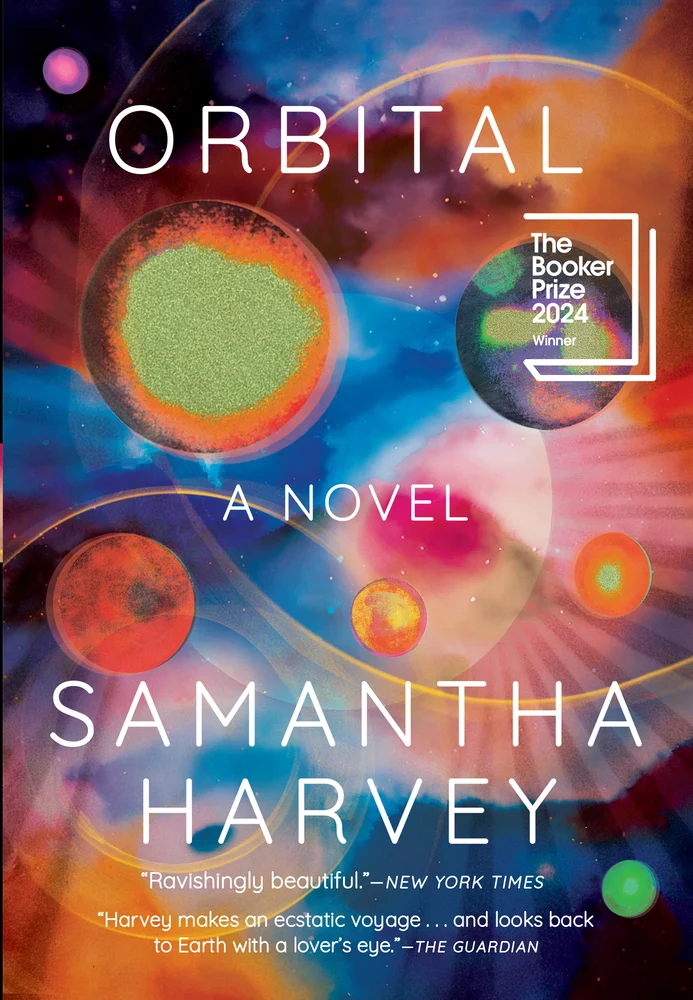
Documentary filmmaker Alice Diop brings an unsettling sense of reality to her first fiction feature, which follows a novelist attending the trial of a woman accused of drowning her 15-month-old child. Based on a real-life incident of infanticide, the courtroom proceedings depicted in Saint Omer borrow from the 2016 trial of Fabienne Kabou, which Diop herself attended. In synopsis, this may sound like a lurid mix of fiction and documentary, but this precise and emotionally complex film, which sprung from Diop’s fascination with Kabou’s trial, does not have the anxiety-stoking energy of a true-crime story. It is so rooted in the point of view of Rama, the writer attending the trial, that I hesitate to describe it as a courtroom drama. The film’s dual focus—on both Rama, the writer, and Laurence, the young woman accused of infanticide—turns the trial into something other than pure spectacle and results in a story that looks closely at the frighteningly powerful bond between mother and child.
The film opens in Rama’s vibrant, Parisian world, where she is thriving in her career as a novelist and professor. In an early scene, we see Rama (Kayije Kagame) delivering a lecture on Marguerite Duras, describing to her students how Duras’s words transform a filmed image of a woman in a state of humiliation into “a human being in a state of grace.” We also see Rama and her partner, Adrien, visiting her ailing mother and sharing a family dinner with Rama’s sister, who is her mother’s primary caregiver. Shortly after, Rama heads to Saint Omer, a small town in northern France, to attend the trial of Laurence Coly, the young mother accused of infanticide. She tells her editor that she wants to observe the trial as research for a novel she’s working on that will be an adaptation of the myth of Medea. Curiously, she says nothing about this research trip during her dinner with her mother and sister, even when there is a clear opportunity to do so. Rama is also secretive about something even more momentous: she’s pregnant with her first child.
Once Rama arrives in Saint Omer, the ritual of the courtroom soon takes over the narrative. Laurence (Guslagie Malanda) is an immediately arresting defendant, even before she speaks. She is pretty and poised, with a controlled manner and direct gaze. A Senegalese immigrant, she came to France to study philosophy, and in press coverage of the trial—which is alluded to in Rama’s conversations with her editor—much is made of her erudition and formal way of speaking. She doesn’t seem to fit the public’s idea of a monstrous baby killer or an African immigrant; instead, she seems like the PhD student that she used to be before she became a mother. In police reports surrounding the crime, Laurence is said to have blamed the murder of her child on evil spirits, but in the courtroom, she’s vague, only saying that she does not believe that she is responsible. The prosecution’s theory is that Laurence planned to kill her daughter for months in advance, and that her excuse of witchcraft is just an act. Laurence’s attorneys argue that she is suffering from mental illness, the result of months of exhaustion, social isolation, and emotional abuse by her partner.
Laurence herself has no explanation for her behavior, and her replies to the judge and attorneys sometimes contradict each other. Malanda plays her as a woman striving to maintain composure, no matter what the cost. As she describes the difficult circumstances leading up to the death of her child, there is an element of detachment that makes her hard to read and ripe for projection. At other times, she takes deep breaths and seems to be holding back tears or sharp words as she listens to witness testimony. There were times when I felt that Laurence killed her child in order for her pain to be taken seriously—by her partner, her mother, and society at large. At other times, I felt Laurence had lost touch with reality. And then there were the chilling moments in her testimony when the abandonment of her child seemed like something she had done out of practical necessity, in order to return to her old life.
As the daughter of Senegalese immigrants, Rama seems at first to feel an uneasy connection to Laurence. Almost everyone in the courtroom is white, and Rama is all too aware of the racist assumptions percolating—some of which are laid bare over the course of witness testimony. One of Laurence’s professors, who is a witness for the prosecution, remarks that she did not understand why Laurence studied Wittgenstein, when it would have been appropriate for her to study something “closer to her own culture.” As the trial unfolds, Rama is haunted by other parallels between herself and Laurence. Both are gifted students who went to Paris to follow their intellectual ambitions. Both women have distant relationships with their mothers, and both are in inter-racial relationships with white men. At the same time, the circumstances of their lives couldn’t be more different. Through court testimony, we learn that Laurence’s academic career was derailed by financial difficulties and a disagreement with her father over what she should study. Laurence’s romantic partner is a feckless man thirty years her senior, a person who refuses to recognize Laurence as his girlfriend, let alone the mother of his child. On the witness stand, he alternates between abdicating responsibility and groveling for forgiveness. He’s the opposite of Rama’s partner, Adrien (Thomas de Pourquery), a bearded, mellow musician who is pleased to share in Rama’s pregnancy and career success. He worries about Rama’s emotional involvement with the trial, fearing for her well-being.
Something deeper than affinity has brought Rama to Laurence’s trial. Diop gives us clues through a series of brief, delicate flashbacks, which feel like peering into Rama’s most formative memories of her mother. In one wordless scene, we see Rama getting breakfast for herself early in the morning while her mother silently leaves for work. It’s a deft sketch of a lonely child and an exhausted mother. A lunch between Rama and Laurence’s mother, Odile, who is present at the trial, is also revealing. Rama seems unnerved by the pride that Odile takes in her daughter’s eloquence on the stand; she also seems taken aback when Odile guesses that she is expecting a baby. Meanwhile, in the Saint Omer hotel where Rama is staying alone, we see the exhaustion of her pregnancy. Taken together, these moments give viewers a sense of Rama’s emotional turmoil. It’s as if she needs to look at the most terrible version of a mother-child separation in order to confront her own complicated feelings about her distant relationship with her mother and her own impending motherhood.
But what are other people seeing when they look at Laurence? What are they projecting onto her? That’s a question this film poses over and over as it serenely observes its courtroom players. Working with cinematographer Claire Mathon (who is probably known best to American audiences for her work with Celine Sciamma on Portrait of a Lady on Fire and Petite Maman) Diop keeps the camera still for long takes, allowing characters to speak uninterrupted and to take uncomfortable pauses. Her actors are often alone in the frame, and although Rama is our proxy to the trial, the camera doesn’t show us what she sees, according to where she’s sitting. Instead, the camera faces everyone head-on, as if they are posing for portraits. The wooden railings, podiums, and paneling give the impression of wooden frames, underscoring the archival aspect of the courtroom, the fact that everything that is being said is being written down and will be preserved—including the name of the child that Laurence drowned.
The script, a collaboration between Diop, playwright Marie N’Diaye, and Diop’s film editor, Amrita David, is loosely based on court transcripts, but leaves room for poetic elements. When the defense attorney makes her closing argument, she alludes to the chimera, a mythic creature that is frightening because it is made of many different animals. The attorney describes how mothers exchange cells with their children during pregnancy, with cells from the fetus migrating toward the mother’s organs. Mothers retain the DNA of their children, even after they are born, and even if the pregnancy is not carried to term. Children also carry the cells of their mothers. The attorney suggests that all women are chimeras: “We carry within us, the traces of our mothers and of our daughters, who will in turn, carry ours. It is a never-ending chain.” Upon hearing this speech, Laurence, for the first time, shows grief.
In moments like this, when the language and performances are heightened, Saint Omer feels more like a play; that is, you remember you are watching something staged, rather than a real court trial. And yet, part of the power of Saint Omer is that it is based on true events: it can’t be dismissed as fairy tale or myth. There’s a real woman behind this story, a horrifying reality we must contend with, and which we see the actors confronting on screen. There’s also a filmmaker and writers who have wrestled with the factual source material to render this fictional story. Using the meta-fictional character of Rama, Diop forces to us to think about our reaction to Laurence’s crime, and the emotional baggage we bring to it. Diop never tells us the verdict, a narrative choice that recalls Rama’s lecture on Duras at the beginning of the film: the artistic transformation of a humiliating image of a woman into “a human being in a state of grace.”
Hannah Gersen is the author of Home Field. Her second novel, Jennifer Hex, is forthcoming from Little A in 2024. In her monthly newsletter, Thelma & Alice, she recommends movies written and directed by women: https://thelmaandalice.substack.com




